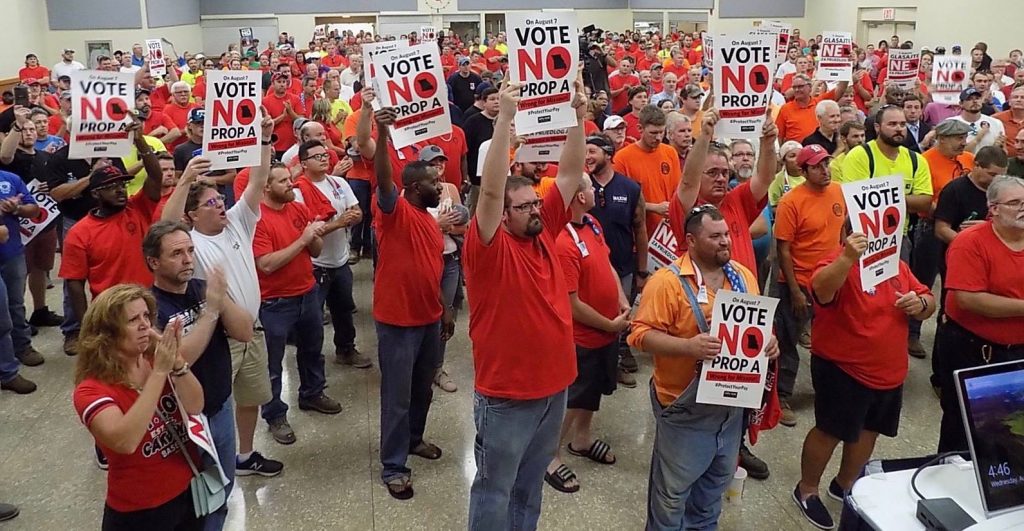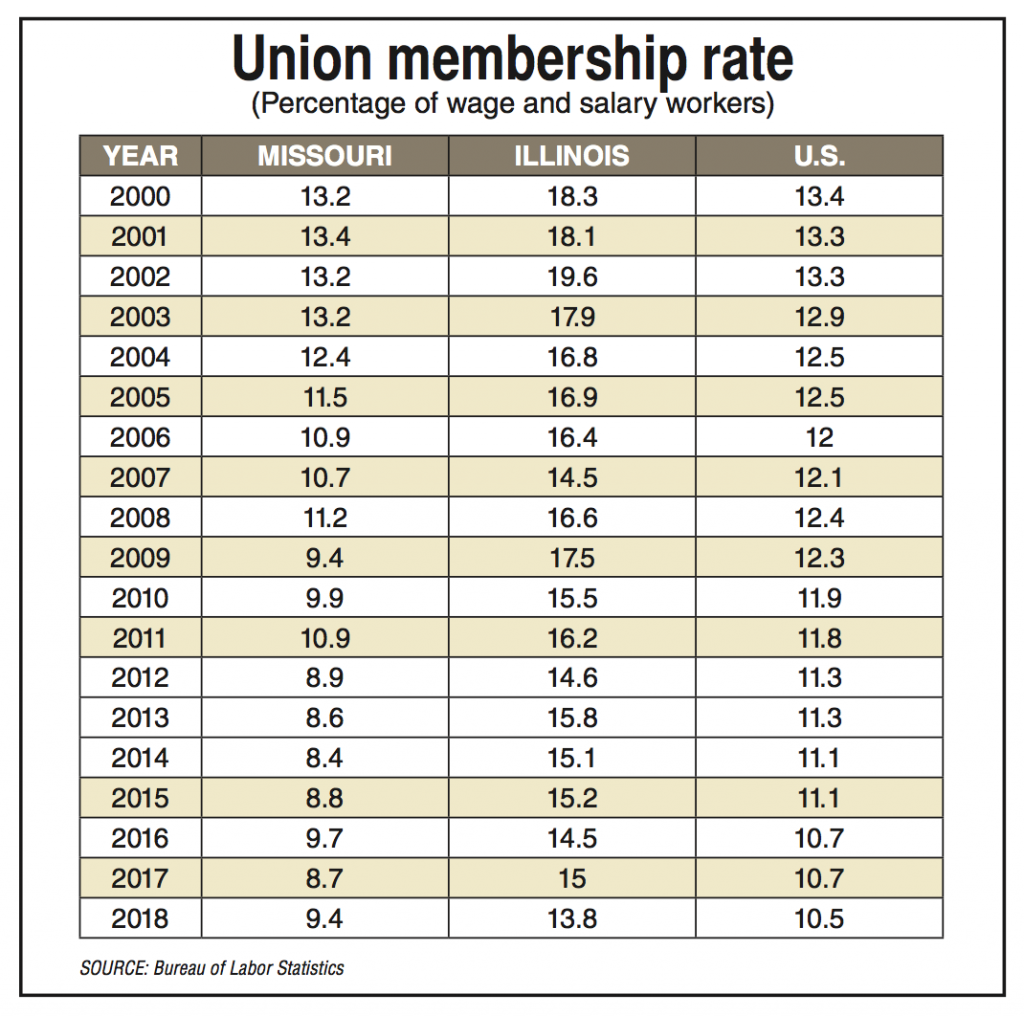
Missouri bucks national trend, adding 25,000 new members
By TIM ROWDEN
Editor
Sixty-two percent of Americans approve of labor unions today, up from 61 percent in 2017 and 56 percent in 2016, according to a recent Gallup poll.
But the union membership rate –– the percentage of wage and salary workers who belong to unions – fell slightly to 10.5 percent in 2018, down by 0.2 percentage points from 2017, the U.S. Bureau of Labor Statistics reported this month.
Missouri bucked the national trend proving, perhaps, that there’s nothing like a crisis to motivate people.
Unions and their allies defeated Missouri’s so-called “right-to-work” law last year, and also added 25,000 new members to their ranks, reversing a years-long trend of declining membership.
 Some 9.4 percent of all Missouri workers were union members last year, up from 8.7 percent in 2017.
Some 9.4 percent of all Missouri workers were union members last year, up from 8.7 percent in 2017.
Union membership in Missouri totals 251,000, according to the BLS report. An additional 32,000 Missourians are represented by unions but are not members.
The state’s phony “right-to-work law,” which voters rejected 67 to 33 percent in August, would have made financial support optional for those non-members. Voters –– union and non-union, members and non-members –– saw the law for what it was and soundly rejected the anti-worker measure.
BEHIND THE NUMBERS
There is something happening behind the numbers.
Nationwide, 2018 was one of the most substantial years for collective action in American history.
In addition to the defeat of Prop A (“right-to-work”) in Missouri, the uptick in union membership coincided with voter approval of a minimum wage increase and passage of Clean Missouri, a constitutional amendment aimed at improving transparency and accountability in state government.
In Illinois, union membership fell to 13.8 percent in 2018 from 15 percent the year before. But voters rejected the anti-worker, anti-union agenda of Republican Governor Bruce Rauner, electing pro-union Democrat J.B. Pritzker governor.
In his first day in office, Jan. 14, Pritzker issued orders and signed bills designed to help workers, including:
• A bill to strengthen the Prevailing Wage system.
• An executive order allowing for Project Labor Agreements on all state public works projects.
• A measure to combat equal pay disparity, as part of that order, by prohibiting the state from requesting the salary history of job applicants.
• An executive order requiring the Department of Labor to “expeditiously” deal with cases of wage theft and day-labor exploitations.
• A process to restore state employees to their previously negotiated pay levels after former Governor Rauner refused to honor their contractual step increases.

NATIONWIDE
Nationwide, workers are standing together to improve their workplaces and communities:
• Tens of thousands of teachers have gone on strike for better pay and stronger schools in red and blue states, including more than 30,000 teachers who went on strike in Los Angeles this month winning a tentative agreement that calls for reducing class sizes, hiring more librarians, nurses and counselors, providing a long-overdue salary increase for teachers.
• UNITE HERE hotel workers took on Marriott, the most profitable hotel chain in the world, and won higher wages, a safer work environment and a say on how technology is used.
• Google workers worldwide walked out to demand an end to workplace sexual harassment and a voice on the job.
• More than 950 union members were elected to public office in 2018, along with even more pro-worker allies.

PRIVATE-SECTOR
UNION MEMBERSHIP
Public-sector union membership held strong in 2018, despite the Supreme Court’s anti-worker ruling in Janus v. AFSCME, which pundits predicted would be the death knell of the Labor Movement. In addition, the number of workers represented by private-sector unions went up, with workers from Boeing to JetBlue to Harvard University and others winning union recognition in 2018.
Union membership in the United States could be poised for a major increase. A survey last year by the National Opinion Research Corporation at the University of Chicago found 60 million workers — the population of New York and California combined — would vote to join a union today if given the chance.

